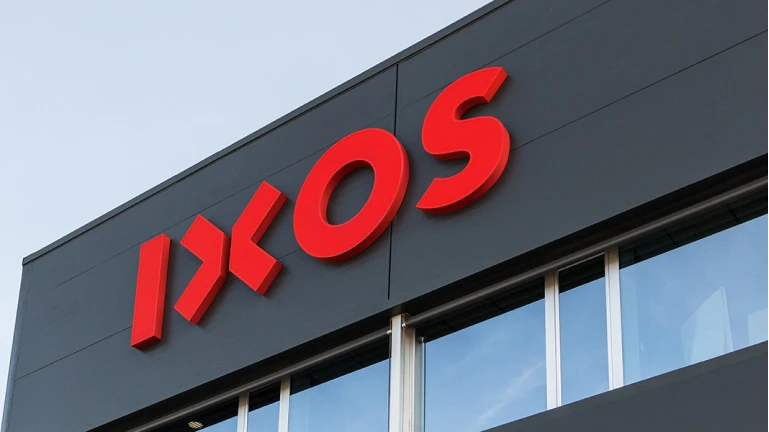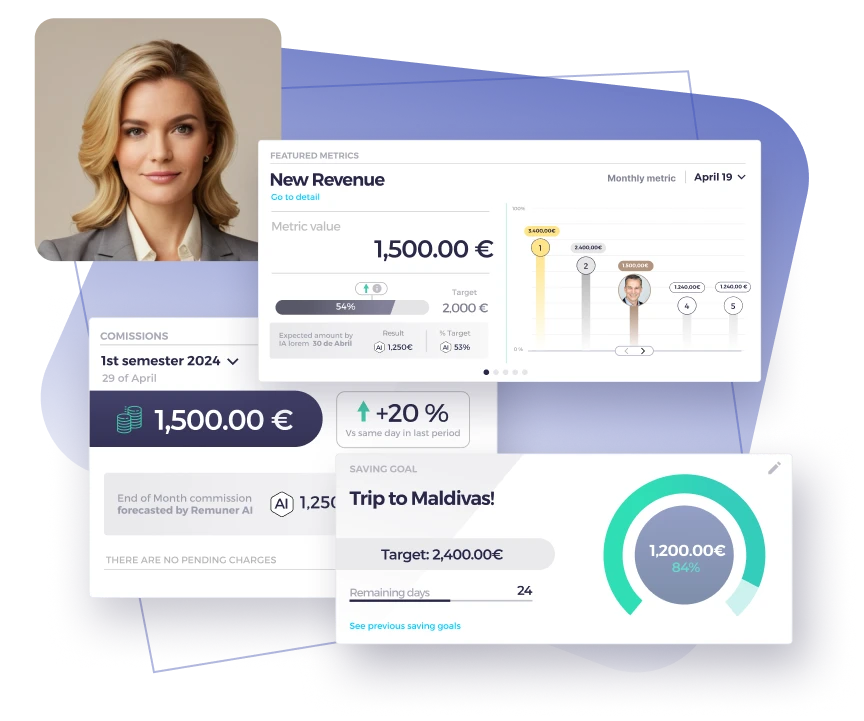In the sales world, measuring performance is crucial for achieving success. Key Performance Indicators (KPIs) play a vital role in this process. These indicators help evaluate and enhance strategies, identify areas for improvement, and ensure that the sales team is on track to meet their sales targets. In this article, we delve into the most important sales KPIs, how to use them, and why they are essential for any sales team.
Table of contents
What is a KPI in sales?
A KPI in sales, or Key Performance Indicator, is a measurable metric used to evaluate a sales team’s effectiveness in achieving specific goals. Common sales KPIs include revenue, conversion rate, sales cycle length, and pipeline progress. These indicators help monitor performance, guide strategy, and drive data-informed decisions that improve sales outcomes.
The Importance of a Sales KPIs
Sales KPIs are crucial for:
- Measuring Progress. They help determine if the sales team is on track to meet revenue and growth targets.
- Identifying Areas for Improvement. They highlight problems and opportunities to optimize sales strategies.
- Making Informed Decisions. They provide concrete data for decision-making based on facts rather than assumptions.
- Motivating the Team. Clear KPIs allow salespeople to see their progress and feel motivated to achieve their goals.
Main Sales KPIs
Now that you know what is a kpi in sales, here are some of the most common sales KPIs, though many others may vary depending on the type of business or company.
Total Revenue
Total revenue is one of the most important and straightforward KPIs. It shows how much money the sales team has generated over a specific period. This indicator is crucial for evaluating the overall success of sales strategies.
Sales Pipeline
The sales pipeline tracks all sales opportunities from the initial contact to the closing of the sale. This KPI helps visualize where opportunities are in the sales cycle and how close they are to becoming customers.
Monitoring the sales pipeline is essential to identify which stage each opportunity is in and take steps to advance them through the sales cycle. A well-managed pipeline helps forecast future revenue and plan strategies.
Conversion Rate
The conversion rate measures the percentage of opportunities that turn into actual sales. This KPI is critical for evaluating the effectiveness of the sales team and the quality of leads generated. To improve the conversion rate, it’s important to understand why some opportunities don’t convert and adjust strategies accordingly.
Sales Cycle
The sales cycle is the average time it takes to complete a sale from the first contact with a potential customer to closing the deal. This KPI is crucial for understanding the efficiency of the sales process.
A shorter sales cycle means the sales team is more efficient at closing deals. Analyzing and reducing the sales cycle can lead to higher productivity and lower costs associated with generating revenue.
Retention Rate and Churn Rate
The retention rate measures the percentage of customers who stay with the company over a specific period, while churn represents the percentage of customers who leave. Both KPIs are essential for evaluating customer satisfaction and the effectiveness of retention strategies.
Reducing the churn rate by identifying the reasons behind customer attrition and improving retention can significantly impact recurring revenue and business stability.
Recurring Revenue (ARR and MRR)
- Annual Recurring Revenue (ARR) is a crucial metric for subscription-based businesses. This KPI provides a projection of the annual revenue anticipated from recurring subscriptions.
- Monthly Recurring Revenue (MRR) is a crucial metric that evaluates both short-term revenue growth and stability. This KPI provides a monthly perspective on the financial well-being of the company, serving as a valuable indicator of its overall health and performance.
On-Target Earnings (OTE)
OTE is a metric used to calculate a sales representative’s potential earnings if they meet their sales targets. This KPI includes base salary and performance-based commissions.
OTE is crucial for motivating sales representatives to achieve and exceed their goals, providing a clear picture of the rewards for their performance.
How to Implement and Use Sales KPIs
Effectively implementing and using sales KPIs requires a strategic approach. Here are some key steps:
1. Define Clear Objectives
Before setting KPIs, define clear and achievable goals for the sales team. These goals should be specific, measurable, attainable, relevant, and time-bound (SMART).
2. Select the Right KPIs
Not all KPIs are relevant for all companies. Select those that align with the company’s specific sales goals and strategies. For example, a SaaS company might focus on ARR and churn, while a B2B company might prioritize conversion rate and sales cycle.
3. Monitor and Analyze Data Regularly
Regularly monitoring KPIs is essential for evaluating progress and making real-time adjustments. Use CRM and data analytics tools to facilitate this process, providing up-to-date and detailed information.
4. Adjust Strategies Based on Data
Use sales KPIs to inform and adjust sales strategies. If a KPI shows underperformance, identify the underlying causes and take corrective action.
5. Motivate and Train the Team
Sharing KPIs and results with the sales team can be a powerful motivational tool. Training sales representatives to understand and use these KPIs can improve their performance and engagement.

Tools for Measuring Sales KPIs
Using the right tools can make a significant difference in measuring and analyzing sales KPIs. Some effective tools include:
CRM Systems
CRM systems (Customer Relationship Management) are essential for managing and analyzing customer information and sales opportunities. They enable sales teams to track interactions, manage the sales pipeline, and measure KPIs in real-time.
Data Analytics Software
Data analytics software helps transform sales data into actionable insights. Tools like Tableau, Power BI, and Google Data Studio allow for the visualization of sales KPIs, identification of trends, and informed decision-making.
Marketing Automation Tools
Tools like HubSpot and Marketo can integrate with CRM systems to provide a comprehensive view of the sales cycle. These tools help track the effectiveness of marketing campaigns and their impact on sales KPIs.
Communication and Collaboration Platforms
Platforms like Slack, Microsoft Teams, and Zoom facilitate communication and collaboration among sales team members. Maintaining effective communication is crucial for KPI tracking and strategy alignment.
Examples of Sales KPI by business model
To illustrate how sales KPI s can be applied in practice, here are some common KPIs for various business models:
SaaS (Software as a Service)
- Monthly Recurring Revenue (MRR): Monthly recurring revenue from subscriptions.
- Churn Rate: Percentage of customers canceling subscriptions in a given period.
- Net Retention Rate: this KPI is used to measure the percentage of revenue retained from existing customers over a specified period, typically excluding new customer acquisition revenue.
- Lifetime Value (LTV): Total expected value of a customer over their relationship with the company.
- Customer Acquisition Cost (CAC): Total cost to acquire a new customer.
- Logo Growth Rate: Speed at which the company acquires new customers.
E-commerce
- Total Revenue: Total sales generated in a given period.
- Conversion Rate: Percentage of website visitors making a purchase.
- Average Order Value (AOV): Average value in dollars of each order placed.
- Customer Retention Rate: Percentage of customers making repeat purchases.
- Cost per Acquisition (CPA): Marketing and advertising cost to acquire a new customer.
Marketplace
- Gross Merchandise Value (GMV): Total value of sales made through the platform.
- Number of Transactions: Total transactions completed on the platform.
- Commission Revenue: Revenue generated from sales commissions.
- Seller Activation Rate: Percentage of sellers registering and making their first sale.
- Customer Satisfaction Rate: Measure of how products and services meet or exceed customer expectations.
Retail
- Sales per Store: Revenue generated by each individual store.
- Sales Growth Rate: Sales comparison in stores open for at least one year.
- Gross Margin: Difference between sales revenue and the cost of goods sold, expressed as a percentage of revenue.
- Inventory Days of Sales (DSI): Average number of days an item stays in inventory before being sold.
- In-Store Conversion Rate: Percentage of store visitors making a purchase.
Financial Services
- Revenue per Account: Revenue generated by each individual customer.
- New Product Adoption Rate: Speed at which customers adopt new financial products.
- Number of New Accounts Opened: Number of new accounts opened in a given period.
- Customer Retention Rate: Percentage of customers continuing to use the company’s services.
- Customer Acquisition Cost (CAC): Total cost to acquire a new customer.
The Power of Sales KPIs
Sales KPIs are essential tools for measuring and improving the performance of the sales team. By setting and monitoring the right KPIs, companies can ensure they are on the right path to achieving their revenue and growth goals. From the sales pipeline to the sales cycle, each KPI provides valuable insights that can help optimize sales strategies and motivate the team.
Implementing a KPI-based approach not only enhances the efficiency and effectiveness of the sales team but also provides a solid foundation for informed decision-making. By understanding and using these key performance indicators, companies can successfully navigate the complex sales landscape and ensure sustainable and profitable growth.
FAQs About Sales KPIs
What are the most important sales KPIs?
The most important sales KPIs include total revenue, sales pipeline, conversion rate, sales cycle length, churn rate, and customer acquisition cost (CAC). The right KPIs depend on your business model.
How do you measure sales KPIs?
Sales KPIs are measured using CRM tools, data analytics platforms, and sales reports. Regular monitoring and adjustments ensure accuracy and effectiveness.
What is a good conversion rate for sales?
A good sales conversion rate varies by industry, but B2B sales typically see a 2-5% conversion rate, while e-commerce businesses often aim for 1-3%.
Why is tracking sales KPIs important?
Tracking sales KPIs helps identify growth opportunities, measure performance, optimize strategies, and align sales goals with business objectives.





